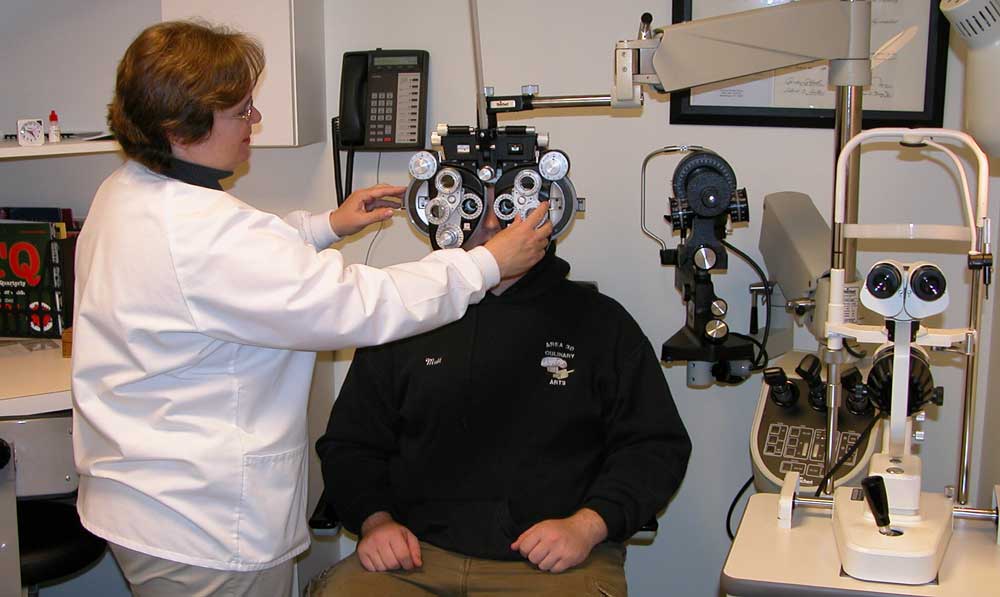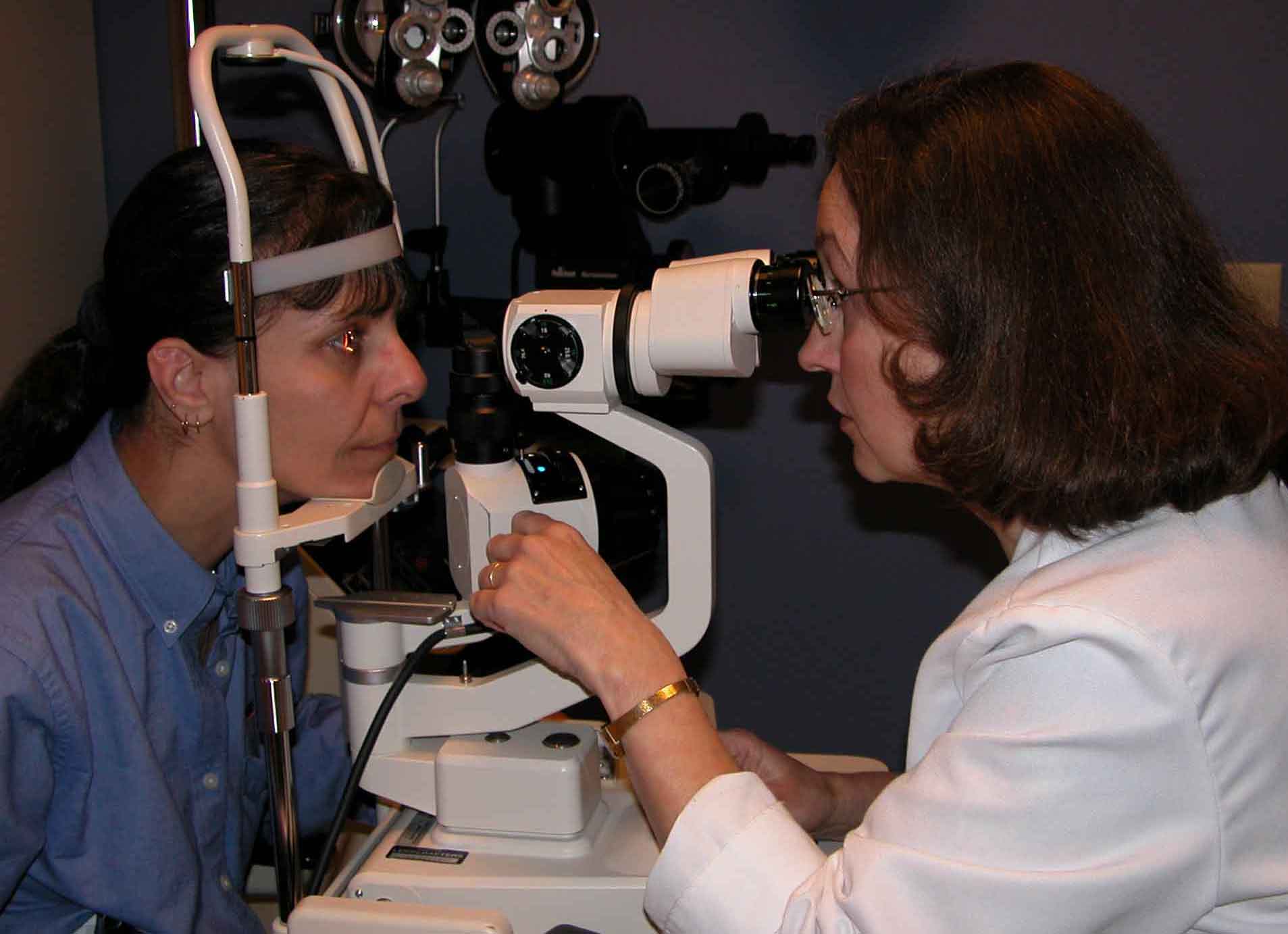EYE EXAMINATION Procedures
The examination helps us assess the health
of your eyes, determine whether vision correction is needed, and
apprise you of your options. Our emphasis is on combining
technical measurement data with your specific occupational and
historical needs, and personal preferences.
We discuss the benefits and drawbacks of
the available alternatives, and encourage your involvement in the
final choice. This increases the likelihood that the
prescriptions we write will be effective in enhancing vision in
the areas of most concern.
We consider pupil dilation and
binocular indirect ophthalmoscopy essential to a thorough
determination of ocular health (part of the standard exam).
Standard Exam Components
- Visual acuity (with and without correction)
- Stereopsis (depth perception)
- Color testing (routinely for males; as
indicated for females)
- Autorefraction (computer-assisted
determination of refractive error)
- Tonometry (intraocular pressure; part of
glaucoma evaluation)
- Pupil response
- Subjective refraction ("Do you prefer ONE, or
TWO?")
- Near-point testing (when indicated)
- Muscle balance testing (when indicated)
- Biomicroscopy (microscopic evaluation of
lids, lashes, conjunctiva, cornea, anterior chamber,
iris, lens)
- Visual fields screening (computer-assisted automated
perimeter evaluation of peripheral vision)
- Ophthalmoscopy (evaluation of internal eye
health, including retina, optic nerve, blood vessels)

Non-contact tonometry

Behind the phoropter

Biomicroscopy
Contact Lens Fittings
In addition to the standard
components above, we measure the shape of the cornea
(keratometry). Then, based on refractive status, general
health, occupational and practical considerations, and
cosmetic preferences, we select a lens that has the best
characteristics for your needs.
We instruct on insertion,
removal, and care of the lenses.
During the 3-month follow-up
period, we evaluate for continued good vision, comfort, and
ocular health.
Other Services
- High resolution
retinal
photography
- Threshold visual fields (extensive computer-assisted
automated perimeter evaluation of peripheral vision)
- Consultation and referral to
other specialists (including
ophthalmologists, low-vision specialists, vision training
clinics, neurologists and internists)
Home


